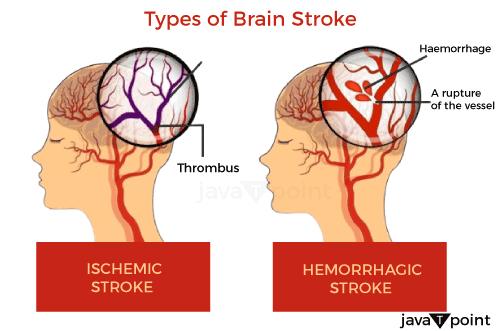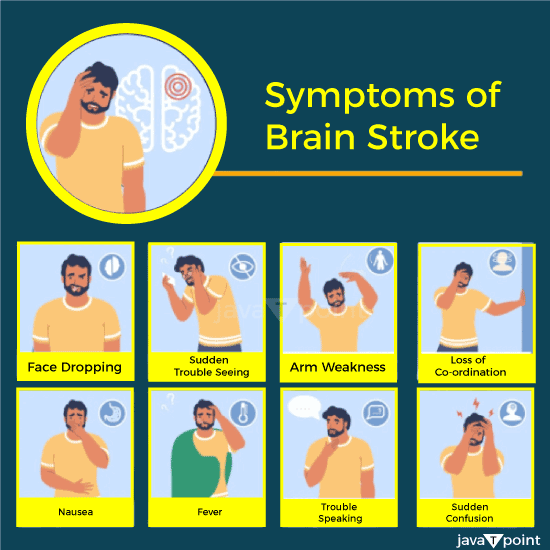Brain Stroke SymptomsBrain stroke is the world's second leading cause of death, the third leading cause of disability, and the second leading cause of disability. According to recent research, one in every three people in India suffers from a stroke. The warning signals of a stroke can be clear in some circumstances, but what's going on within the body is quite complex. 80% of strokes may be avoided. However, after you've had a stroke, your chances of having another one increase. Learn more about brain stroke types, symptoms, and risk factors in the sections below. What is a Brain Stroke?When blood circulation in the brain is impeded or a blood vessel in the brain ruptures and spills, a brain stroke occurs. The obstruction or burst prevents blood and oxygen from reaching brain tissue. Without oxygen, the brain's tissues and cells are damaged and die quickly, causing a range of symptoms. When brain cells die, they do not regenerate and can cause irreversible damage, leading to physical, cognitive, and mental deficits. It is vital to restore enough blood flow and oxygen supply to the brain as soon as feasible. Types of Brain Stroke
Brain stroke is mainly two types. 1. Ischemic Stroke: It is the most prevalent, accounting for 80% of all brain strokes. Ischemic stroke can be thrombotic or embolic in nature. A thrombotic stroke is the most common kind of ischemic stroke. As a result of atherosclerosis (cholesterol-containing plaque), a blood clot forms inside a sick or damaged artery in the brain, restricting blood flow. 2. Embolic Stroke: It occurs when a clot or small piece of plaque formed in one of the arteries going to the brain or in the heart is forced through the bloodstream and lodges in narrower brain arteries. The blood supply to the brain is cut off due to the clogged channel. Intracerebral or subarachnoid bleeding can cause haemorrhagic stroke. Intracerebral haemorrhage is bleeding within the brain tissue; the most prevalent cause is artery changes caused by chronic hypertension. Bleeding between the surface of the brain and the skull is known as subarachnoid haemorrhage. Cerebral aneurysms and arteriovenous malformations (AVM) are the most common causes. SymptomsIf you suspect that you or someone, you're with is having a stroke, keep track of when the symptoms started. Some therapies are most effective when delivered soon after a stroke occurs. 
Signs and Symptoms of Brain Stroke1. Face, Arm, or Leg Numbness or Paralysis: You may have sudden numbness, weakness, or paralysis in your face, arm, or leg. Typically, this only affects one side of the body. Experiment with extending both arms above your head at the same time. If one of your arms begins to fall, you may be having a stroke. One side of your mouth may droop as you try to smile. 2. Vision Issues in One or Both Eyes: You may notice cloudy or darker vision in one or both eyes, as well as seeing double. 3. Headache: A sudden, strong headache, maybe accompanied by vomiting, dizziness, or altered awareness, may indicate a stroke. 4. Problem in Walking: You may trip or lose your equilibrium when walking. You can also feel dizzy or lose your coordination. Risk Factors Causing Brain StrokeAlthough strokes are more common in the elderly, they can occur at any age. Understanding the risk factors for stroke and detecting the warning symptoms may aid in stroke prevention. Early detection and treatment increase the likelihood of complete recovery. The two types of risk factors are modifiable and non-modifiable risk factors. Modifiable Risk Factors:Theyare risk factors that are controlled and curable, such as-
Non-modifiable or Uncontrollable Risk Factors:
Next Topicventricles-of-the-brain
|
 For Videos Join Our Youtube Channel: Join Now
For Videos Join Our Youtube Channel: Join Now
Feedback
- Send your Feedback to [email protected]
Help Others, Please Share









